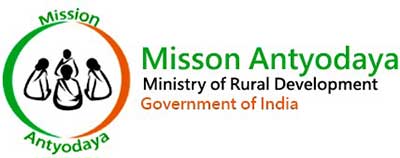Relevance: GS-2: Government policies and interventions for development in various sectors and issues arising out of their design and implementation.
Key phrases: Economic Development and Social Justice, District Planning committee, Decentralisation, Mission Antyodaya, Ministry of Panchayati Raj, Ministry of Rural Development, Convergence, Eleventh Schedule, Gaps in Gram Panchayats, Social justice, India’s Fiscal Federalism.
Why in News?
- With the right momentum, the project can help transform rural India — in terms of development and social justice.
Background:
- The Indian Constitution mandates local governments to prepare and implement plans for ‘economic development and social justice’ (Articles 243G and 243W).
- Several complementary institutions and measures such as the Gram Sabha to facilitate people’s participation, the District Planning committee (DPC) to prepare bottom up and spatial development plans, the State Finance Commission (SFC) to ensure vertical and horizontal equity, one-third reservation for women (in most States, now 50%), population-based representation to Scheduled Caste/Scheduled Tribe communities, and so on were introduced to promote this goal.
- India’s decentralisation reforms have failed to take the decentralisation process forward in delivering social justice and progress in rural India.
- It is argued in this article that given the right momentum, the ‘Mission Antyodaya’ launched in 2017-18 bears great promise to revive the objectives of these great democratic reforms. The Ministry of Panchayati Raj and the Ministry of Rural Development act as the nodal agents to take the mission forward.
Mission Antyodaya
- Adopted in Union Budget 2017-18, Mission Antyodaya is a convergence and accountability framework aiming to bring optimum use and management of resources allocated by 27 Ministries/ Departments of the Government of India under various programmes for the development of rural areas. It is envisaged as state-led initiative with Gram Panchayats as focal points of convergence efforts.
- It facilitates to identification of gaps in a quest for poverty free gram panchayats and drive economic activities.
Key Goals of Mission Antyodaya:
- The main objective of ‘Mission Antyodaya’ is to ensure optimum use of resources through the convergence of various schemes that address multiple deprivations of poverty, making gram panchayat the hub of a development plan.
- This planning process (whose intellectual heritage is traced to the people’s plan of Kerala) is supported by an annual survey that helps to assess the various development gaps at the gram panchayat level, by collecting data regarding the 29 subjects assigned to panchayats by the Eleventh Schedule of the Constitution.
- These subjects are broken down into 112 parameters for data collection using detailed questionnaires. Data regarding health and nutrition, social security, good governance, water management and so on are also collected.
- The idea of the Ministry of Panchayati Raj to identify the gaps in basic needs at the local level, and integrating resources of various schemes, self-help groups, voluntary organisations.
- Supporting the process of participatory planning for Gram Panchayat Development Plan (GPDP), which will improve service delivery, enhance citizenship, create pace for an alliance of people's institutions and groups and improve governance at the local level.
Gaps in Gram Panchayats:
- The ‘Mission Antyodaya’ survey in 2019-20 for the first time collected data that shed light on the infrastructural gaps from 2.67 lakh gram panchayats, comprising 6.48 lakh villages with 1.03 billion population. The data set updated annually enables development planning sectorally and spatially, from the village level to the State and the country as a whole.
- For an insight into the gap report, we may use the State-wise break-up of the score-values. The maximum score values assigned will add up to 100 and are presented in class intervals of 10. While no State in India falls in the top score bracket of 90 to 100, 1,484 gram panchayats fall in the bottom bracket. If we consider a score range of 70-80 as a respectable attainment level, Kerala tops but accounts for only 34.69% of gram panchayats of the State, the corresponding all-India average is as low as 1.09%. Even for Gujarat which comes next to Kerala, gram panchayats in this bracket are only 11.28%.
Social Justice Still Distant:
- The gap report and the composite index show in unmistakable terms that building ‘economic development and social justice’ remains a distant goal even after 30 years of the decentralisation reforms and nearly 75 years of Independence.
- Nearly four years have passed since the former Finance Minister, Arun Jaitley, announced the Mission Project in his Budget speech of 2017-18 with the specific target “to make 50,000 gram panchayats poverty free by 2019, the 150th birth anniversary of Gandhiji”. Nothing happened but the goal posts have been moved to 2022, to coincide with the 75th anniversary of Independence, on August 15. Removing goal posts is a poor game.
- The scope to reduce the growing rural-urban disparities is tremendous. Given the ‘saturation approach’ (100% targets on select items) of the Ministry of Panchayati Raj, the possibilities of realising universal primary health care, literacy, drinking water supply and the like are also immense.
- But there is no serious effort to converge resources (the Mahatma Gandhi National Rural Employment Guarantee Act, the National Rural Livelihood Mission, National Social Assistance Programme, Pradhan Mantri Awas Yojana, etc.) and save administrative expenses.
- Another lapse is the failure to deploy the data to India’s fiscal federalism, particularly to improve the transfer system and horizontal equity in the delivery of public goods in India at the sub-State level. Evidently the Fifteenth Finance Commission has missed it.
- The constitutional goal of planning and implementing economic development and social justice can be achieved only through strong policy interventions. The policy history of India has been witness to the phenomenon of announcing big projects and failing to take them to their logical consequence. ‘Mission Antyodaya’ is a striking case in recent times.
Source: The Hindu
Mains Question:
Q. In the growing rural-urban disparities, how Mission Antyodaya can help transform rural India in terms of development and social justice. Critically Analyse.








